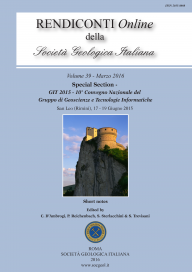
Groundwater flow modeling to support water management scenarios – the Bekaa Valley, Lebanon
Giovanni Formentin (a), Mauro Consonni (a), Simone Sala (b) & Vincenzo Francani (a,c)
(a) Tethys Srl, viale Lombardia 11, 20131 Milano, Italia. E-mail: giovanni.formentin@tethys-geco.it
(b) Università degli Studi di Milano, Dipartimento di Scienze Agrarie e Ambientali, Dr. Steve Chan Center for Sensemaking, AIRS, Hawaii Pacific University & Swansea University
(c) DICA, Politecnico di Milano, piazza L. da Vinci 32, 20133 Milano, Italia.
Volume: 39/2016
Pages: 85-88
Abstract
The Italian Ministry of Foreign Affairs funded a project aimed at developing tools for water management in the Bekaa valley, Lebanon. The Lebanese Ministry of Energy and Water implemented the project, supported by the University of Milan Department of Agricultural and Environmental Sciences (DISAA).
The geologic framework consists of a Cretaceous-Eocene carbonatic structure, crossed by a fracture system parallel to the anticlines of the Anti-Lebanon and Mount Hermon ranges and to the synclinal constituting the Bekaa valley. The carbonatic structure is overlain by a Neogene-Quaternary sequence of lacustrine limestones, marls and conglomerates outcropping in the lower valley.
In the study area, groundwater bodies fed by precipitation along the mountain ridges, give origin to the Orontes river. Surficial and ground water feed the population, agriculture and fish farming and, since 2011, over one million of Syrian refugees.
A Decision Support System (DSS) was set up based on WEAP, a software that represents the interaction between water resources and users by simulating flow mechanisms directly or coupled to external models. MODFLOW-2000, one of such models, was used to represent groundwater flow in the carbonatic and in the overlying Quaternary aquifer, which is present in the lower valley.
By coupling WEAP with MODFLOW, it is possible to represent physically-based scenarios of water management, with the aim of optimizing both water extraction and distribution. Moreover, the groundwater flow model could support negotiations between Lebanon, Syria and Turkey for the distribution of surface and ground water through joint data and knowledge.
Keywords
Get Full Text